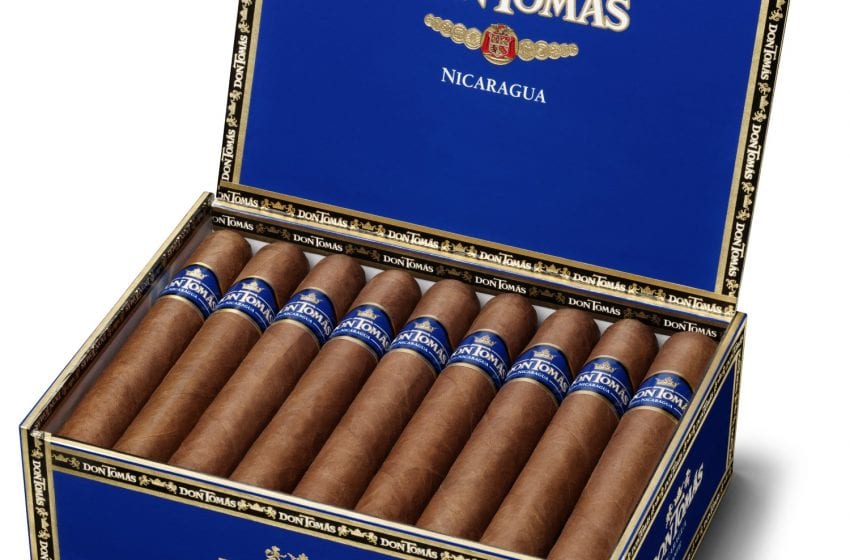The tobacco and vapor industries under Trump

“Elections have consequences.” That was President Barack Obama’s declaration following his 2009 inauguration, one he repeated after last November’s presidential election. And he should know—and the tobacco industry should know, too.
The validity of Obama’s observation was borne out with passage of the Family Smoking Prevention and Tobacco Control Act of 2009. This piece of legislation did finally succeed not because proponents brought new evidence or newly powerful arguments to the table; they won because two elections caused the political arithmetic to change significantly in their favor.
The 2006 midterm elections, which saw the Democratic Party victorious in the House of Representatives and, crucially, regain majority party status in the Senate, and the 2008 presidential election, which witnessed Obama’s historic ascension to the Oval Office and cemented Democratic majorities in Congress, were the reasons Food and Drug Administration (FDA) regulation occurred.
It required Democratic majorities for an FDA regulation bill to be ensured passage through Congress. FDA regulation also required an Oval Office occupant with President Obama’s interventionist, nannying instincts. Under his Republican predecessor, any FDA regulation bill was threatened by President George W. Bush’s veto pen.
Over the coming four years, the tobacco and vapor industries have much at stake. The FDA’s Center for Tobacco Products is looking to strengthen warning labels on cigarette packages, and new, higher federal taxes are much-discussed.
Another regulatory threat was underlined by the U.S. surgeon general’s recent, fearmongering report on vaping. The report is an empirically challenged, politically calculated hit-and-run on a nascent yet extremely promising (in economic and public health terms) industry.
It is increasingly difficult to take seriously what the federal government proclaims or pronounces about tobacco or vaping. One topical, surreal illustration is the half-million dollars that the National Institutes of Health wasted last year sending “friendly reminder” text messages to rural Americans to quit chewing tobacco.
Healthy skepticism
After Donald Trump defeated Hillary Clinton, The Washington Post and The Wall Street Journal ran feature articles attempting to divine which industries will do well and which will do poorly under a Trump administration. Having dodged the interventionist bullet of an avowedly anti-industry Clinton administration, what can the tobacco and vapor industries expect from President Trump?
With so little discussion of tobacco and vapor issues during last year’s presidential campaign, there are various methods for narrowing down the possibilities. One option is to ask whether the personal is political? That is, do Trump’s personal views inform his probable actions or inactions on these files?
A lifetime nonsmoker and nondrinker, Trump is an advocate for an abstemious life, at least in those specific areas. But gambling is an example of a traditional vice that is clearly not on Trump’s “do not do” list. His once industry-leading casinos tangibly demonstrated his encouragement of riskier lifestyles. Before assuming that Trump’s personal views on tobacco may dictate his policies, it is also worth noting that Obama, a long-standing cigarette smoker, signed FDA regulation into law, as well as a host of other dubious tax and regulatory schemes, including the forthcoming smoking ban in all public housing.
Or will it be Trump’s attitude to government oversight of private industry that drives his regulatory approach? If so, both Big Tobacco and Little Vapor may be pleased with the results. Trump campaigned on a robust program of deregulation. He said he wanted to eliminate 70 percent of the regulations introduced by the Obama administration.
Trump’s Cabinet selections suggest his will be a deregulating administration. The nomination of Scott Pruitt, the attorney general of the oil- and gas-intensive state of Oklahoma, to direct the Environmental Protection Agency is no less provocative to the country’s cottage industry of professional environmentalists than would be the appointment of a tobacco company executive to head the FDA.
What is notable here is that Trump’s politically incorrect skepticism about global warming and man-made climate change indicates a willingness to defy conventional wisdom on such allegedly settled empirical questions. He exhibits a healthy dose of cynicism toward the public utterances and campaigning of the media-anointed “experts” in respective fields, refusing to accept that the latter are inherently correct or truthful on all matters.
As a result, President Trump’s instincts and political antennae may enable him to see through the smoke and mirrors of the respective anti-tobacco and anti-vaping advocacy campaigns and, consequently, to identify the political, commercial and ideological agendas that drive the production of their research “evidence.”
Trump’s nomination of fast-food industry executive Andy Puzder to be labor secretary sends another important signal. Despite Big Food’s political status as the new tobacco, this choice suggests Trump is unafraid of upsetting the nanny state’s army of activist-lobbyists.
Most revealing may be Trump’s selection of congressman Tom Price, a physician, to head the Department of Health and Human Services. Price would oversee the National Institutes of Health and the FDA. The fact that, in 2008, he voted against allowing the FDA to regulate tobacco as a drug is quite encouraging.
As is the expectation that Vice President Mike Pence will be Trump’s very influential right hand. A consistently rational voice on industry-related issues, as a congressman he voted against FDA regulation and was criticized by anti-tobacco groups for accepting tobacco industry campaign contributions.
With Price’s, Puzder’s and Pruitt’s nominations, it is clear that whatever Trump’s ultimate decisions on the tobacco and vapor fronts, they will not be driven by anti-industry activists.
On the flip side
A potential trouble spot for the tobacco industry may be British American Tobacco’s takeover bid for Reynolds. Trump has indicated pessimism about the virtue of some other proposed mergers, most notably AT&T’s bid to take over media giant Time Warner.
Critically, perhaps, for the rest of the industry, any forthcoming opposition to the tobacco merger would reflect Trump’s opposition to mergers per se rather than opposition to or concerns about the tobacco industry itself.
In exclusively Republican hands, there will be little new trouble brewing in Congress. Trouble will come from outside the legislative arena, in the form of tobacco control groups and their rich patrons, such as Michael Bloomberg. Billionaire businessman Bloomberg is currently ramping up his latest anti-tobacco campaign. The good news for industry is that Bloomberg’s harsh and explicit opposition to Trump’s presidential candidacy will not endear his anti-industry narrative to the White House.
The other predictable source of anti-industry propaganda and prescriptions will be the World Health Organization. Here, industry may benefit from Trump’s anti-globalism worldview and his specific disdain for United Nations-style policymaking.
For Trump, good policy on tobacco and vaping would be good politics. His administration could, for example, reduce tobacco taxes, defund the Center for Tobacco Products, and cut funding for the Office on Smoking and Health.
None of these measures would upset his loyal supporters. He won courtesy of blue-collar voters across the Rust Belt states of the American Midwest. These voters are disproportionately smokers (and drinkers, gamblers and fast-food eaters).
But, should Trump end up governing in his predecessor’s mode on tobacco and vapor issues, both traditional smokers and the burgeoning vapor community may have their political revenge.
America’s 10 million vapers are now a key, single-issue voting bloc. They are disproportionately situated in the so-called “swing states,” and they tell pollsters that they are both passionate about vaping and that they are prepared to vote based on this single issue, perhaps more so than any other group.
Consequently, vaping voters may decide the outcome of the 2020 presidential election, as well as a number of senatorial and congressional races in 2018. It is possible that chasing the vaper vote will become a political fixture.
It is in the hands of President Trump and congressional Republicans to ensure that both vapers and cigarette smokers are in grateful, not grouchy, moods when next they go the polls.






















































